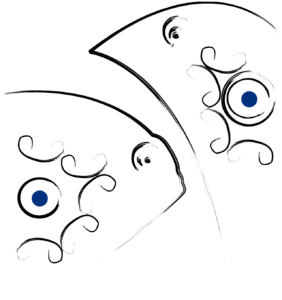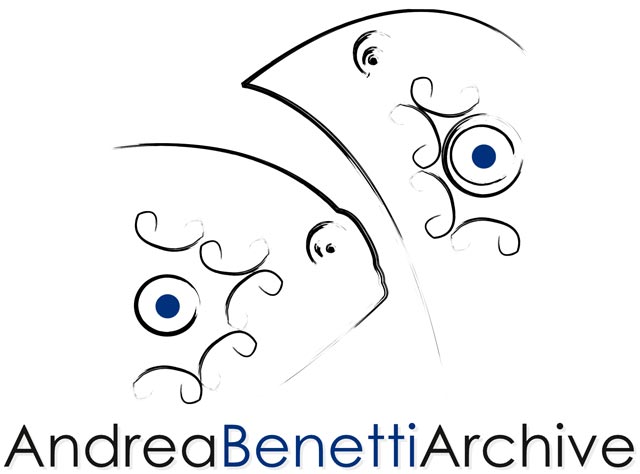From Miró, Klee, and Kandinsky to Andrea Benetti's Neo-Cave Manifesto
Andrea Benetti, born in Bologna in 1964, has been successfully expressing his ideas and his painting within the contemporary art scene for several years. In addition to exhibiting in highly prestigious venues, nearly a dozen museums and significant collections now permanently house his works. In 2006, he conceived the Neo-Cave Art Manifesto, which was officially presented in 2009 at the 53rd Venice Biennale, in the Nature and Dreams pavilion at Ca’ Foscari University. In July 2010, he was invited to the 61st edition of the Premio Michetti, the prestigious international contemporary art exhibition held since 1947 at the Michetti Museum. In November 2010, he was invited to exhibit in Rome at Palazzo Taverna, home of the Amedeo Modigliani Institut Archives Légales – Paris-Rome, as part of the exhibition Portraits d’Artistes, alongside works by Amedeo Modigliani, Giorgio De Chirico, Andy Warhol, Keith Haring, Mario Schifano, Max Jacob, Carlo Corsi, Jules Pascin, and Guido Cadorin.
On the artist’s website, one can read the Summary of the Neo-Cave Art Manifesto. Why did he choose the name Neo-Cave painting to define his artistic practice? Can he provide some insight into his highly personal artistic manifesto?
“As of today, the global scenario and the people who ‘lead’ it are, in my opinion, far from positive. A large portion of the population, especially those in power, seem to dance carefreely while the ship they stand upon is sinking. Environmental and social catastrophes of all kinds loom before us and just around the corner, yet we often pretend not to see them, hurriedly sweeping everything under the rug. I believe the fundamental concepts on which so-called developed societies are based are flawed at their core. Consumerism, as it has been conceived, is a cancer leading to the systematic depletion of every resource and the absolute necessity for continuous growth—essentially, the relentless exploitation of natural and human resources.
For this reason, I believe we must reset and start anew, placing at the center of human will (and, above all, the will of those who govern) respect for the environment and human dignity. Symbolically, resetting and restarting in the world of art means returning to the cave paintings created by primitive humans to seek favor from higher forces. Back then, man had not yet overestimated himself nor placed himself at the center of everything, claiming control over all things—a fatal mistake for humanity.”
In the history of art, from its origins to the present day, are there elements or artists you tend to overlook? And are there others who have particularly influenced you over the course of your life and career?
“I do not disregard any artists, but I do avoid people who do not believe in what they do and who bluff, taking advantage of innocent art lovers and enthusiasts. I dismiss and disapprove of all those who view art solely as a business. They insert a false soul into their work and pass it off as genuine and heartfelt. For my personal taste, I particularly love the works of Miró, Klee, and Kandinsky.”
Does it take you a long time to create even a single piece? Some critics describe your work as a ‘rare pearl’ and speak of ‘speed’ in relation to your creations… Can it be said that producing something special requires hours of effort and dedication?
“Undoubtedly, it takes a great deal of time and effort, as my works must go through seven stages of processing before reaching completion. The term speed, as mentioned in a critique I hold dear—written about my painting by Professor Christian Parisot, President of the Amedeo Modigliani Archives—does not refer to the way I create but rather to a book I produced with the collaboration of a dozen professors from various Italian and international universities. They contributed to the project and wrote for my book Unusual Exploration Within Speed.”
How do you decide on your choice of colors, which are neither too aggressive nor too subdued? Do you also have other artistic creations that may not be public, or have you specialized exclusively in your own artistic movement without ‘hidden aspects’?
“I choose colors unconsciously. When I reach the final ‘stage of processing’ for a piece, I look at it and, without reasoning, instinctively begin mixing the colors that come from within me—the ones my eyes wish to see on that canvas. As for ‘hidden aspects,’ they exist, but not by my own intention; rather, because my art is constantly evolving, relying on continuous research, albeit minimal and incremental. We might describe it as a slow but inexorable progression.”
How do you spend your free time, if your work allows for any?
“I enjoy reading and studying 20th-century Italian history. I have a deep love for Italy and adore being moved by the infinite landscapes it offers, along with the discovery of traditions and local cuisine. I also greatly enjoy engaging with others to acquire new knowledge and perspectives.”
If you were to create a hypothetical ranking titled ‘Where Does Art Live Best?’, which countries or nations would you place at the top and which at the bottom?
“I cannot answer this question because it is very complex, and I lack sufficient knowledge. I could speak from experience or hearsay, but that does not always correspond to reality, and I would risk making inaccurate statements.”
Has the relationship between art and the public, and the concept of acquiring art as an investment, become more complicated in Italy? Hypothetically, is it easier to establish oneself economically in ‘eternal’ cities like Paris, London, or Amsterdam, or elsewhere abroad?
“No, I do not believe the art market in Italy has become more complicated—rather, it has changed, sometimes wisely and sometimes recklessly. The key factor that makes a market credible is the professionalism and seriousness of its various actors: artists, gallery owners, collectors, and passionate art buyers. As in many sectors, there are patchy distributions of excellence and shortcomings within the same country or even the same metropolis. Certainly, new trends and artistic movements are consecrated by the markets of major cities, but they are not necessarily generated there.”
Can you tell us about your travels abroad? What subtle connection exists between an artist and traveling the world to learn, discover, and gain experience?
“I cannot define a fixed correlation. What I do know is that the art I create stems from my thoughts and, therefore, from my mind—shaped by life experiences (obviously including travels) after a long process of sedimentation and reflection. Rather than physical travels, my painting is nourished by mental journeys, which should not be confused with the mind-altering effects of drugs, alcohol, or similar substances. I despise the culture of intoxication and consider it antithetical to art, as it brings death, whereas art is life—it is love.”
What prompted you to dedicate an entire day of art and creativity to people with disabilities? Would you consider visiting the Treviso area, where there are many associations focused on this cause (such as Arep Onlus, Casa Codato, etc.)?
“The reason stems from the need to love in a broad sense and to give for the sake of giving. And who better than those who have been less fortunate than us to be the recipients of this need to offer love and attention? It would be wonderful if everyone thought this way… I believe that luck and the will to live are closely linked, and since I consider myself extremely fortunate—because in life, I do what I love—I believe that this joy and good fortune must be shared and given to those who, in some respects, have been less fortunate than I have. My inclination is always to say yes to any project aimed at helping others, whoever they may be. To do so, I would even travel to the other side of the world.”
Simone Soldera |
Journalist and writer |




